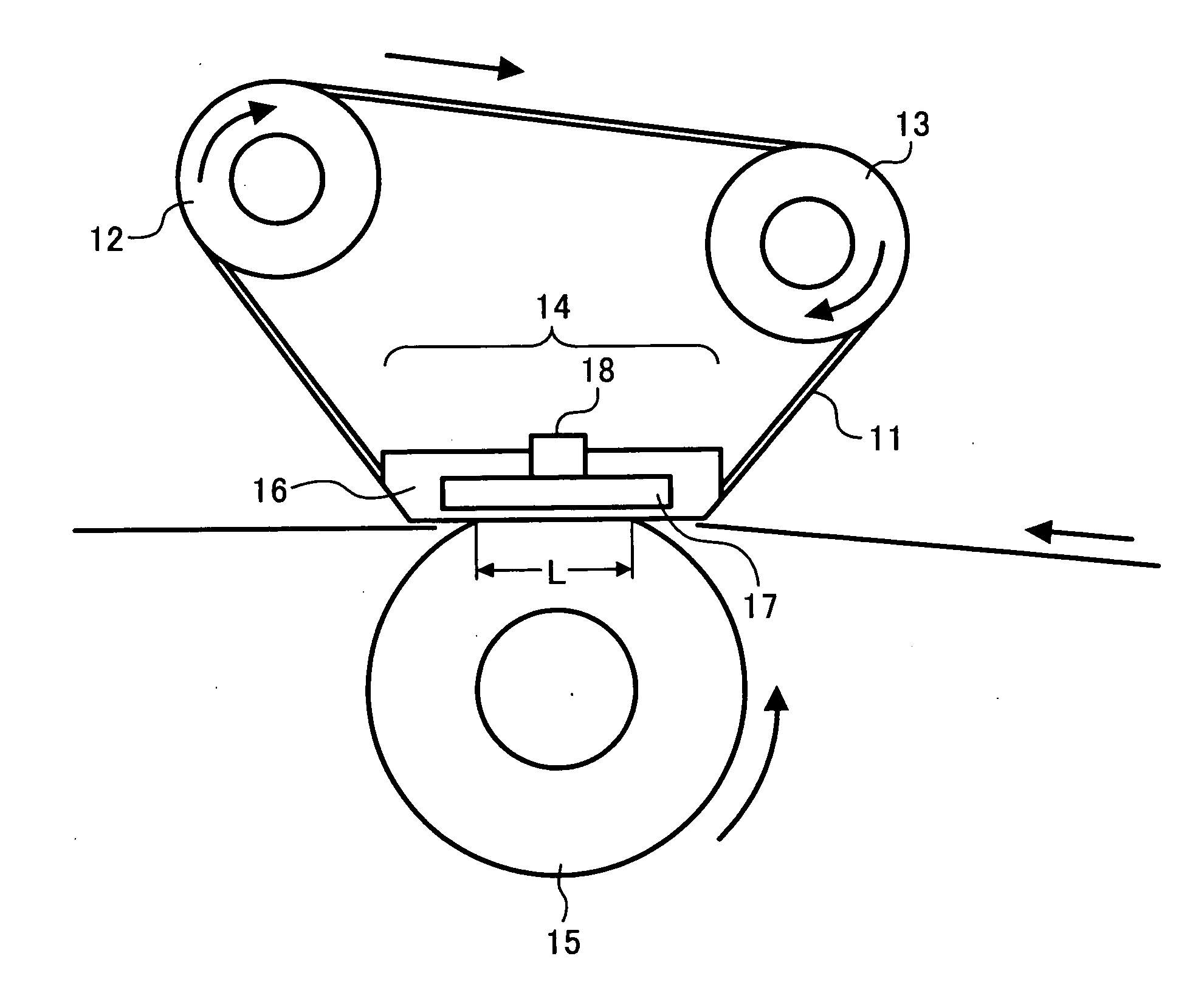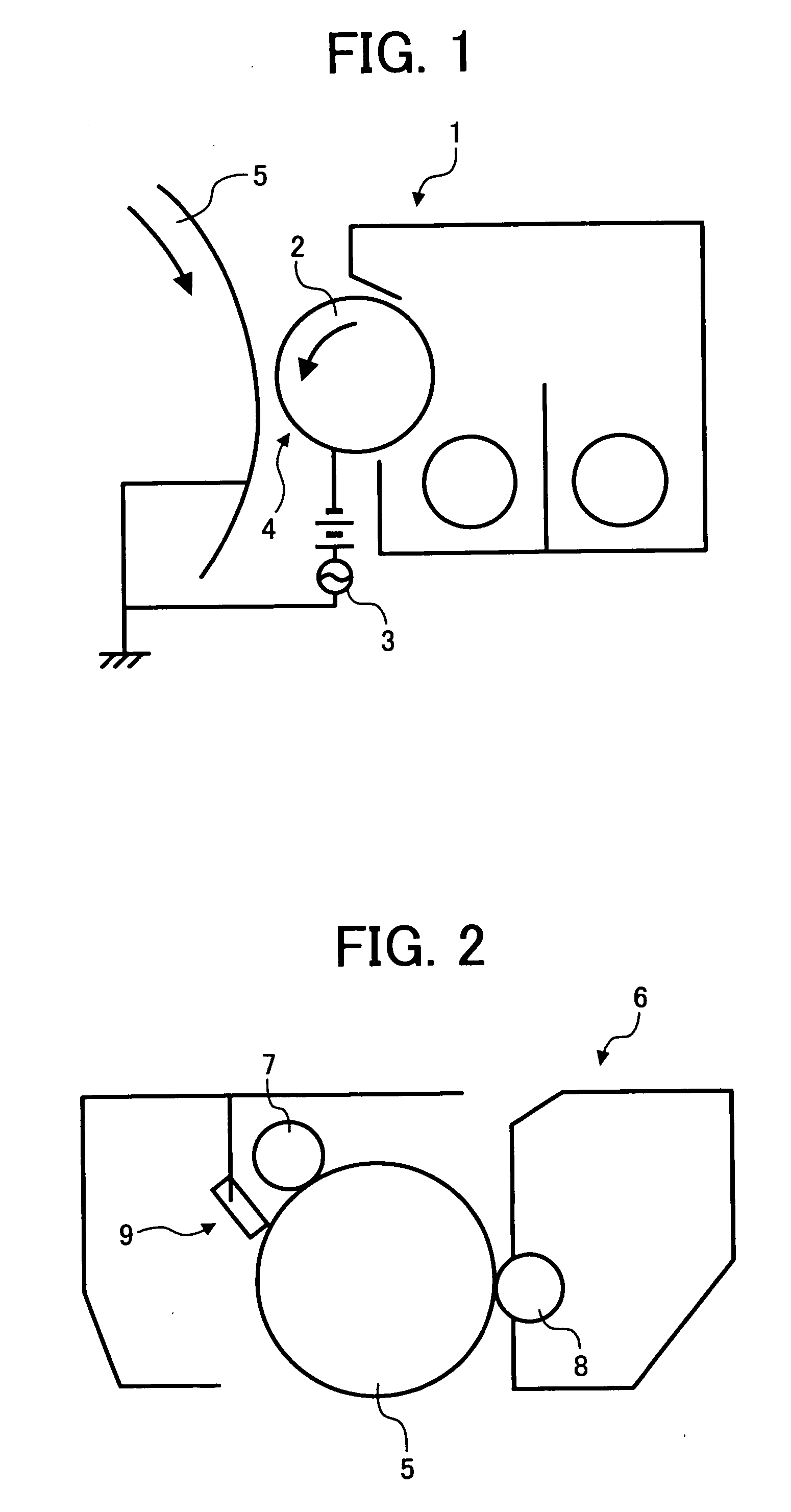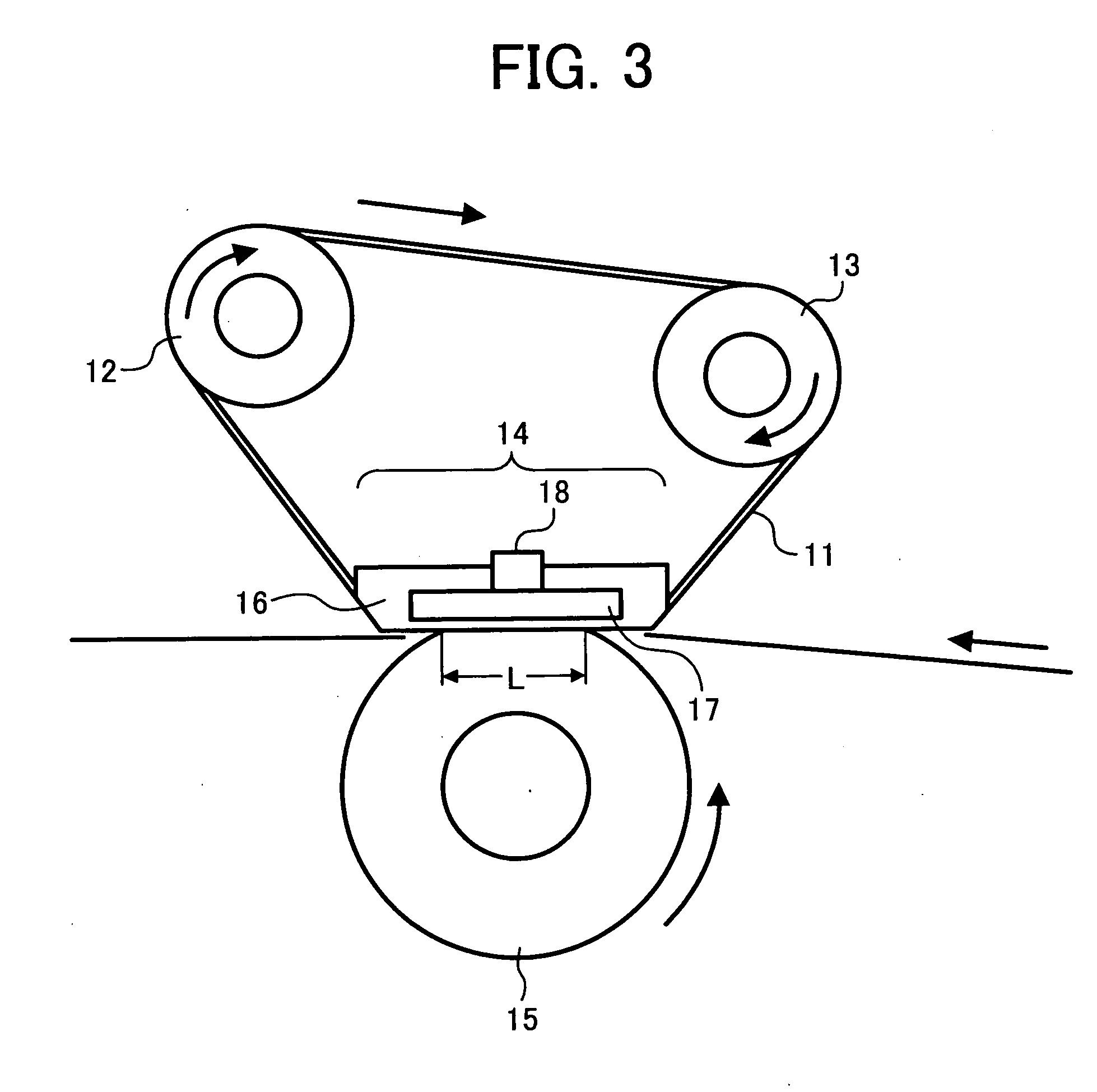Toner, and developer, image forming method, image forming apparatus and process cartridge using the toner
a technology of toner and developer, which is applied in the direction of electrographic process, electrographic process using charge pattern, instruments, etc., can solve the problems of high-speed development, defective charge and transportation of toner due to long-time use, and large image developer size, so as to maintain the charge quantity and chargeability. , the effect of stably controlling
- Summary
- Abstract
- Description
- Claims
- Application Information
AI Technical Summary
Benefits of technology
Problems solved by technology
Method used
Image
Examples
synthesis example 1
The following materials were mixed in a four-opening separable flask with a stirrer, a thermometer, a nitrogen lead-in opening and a falling condenser with an esterified catalyst.
Polyoxypropylene(2,2)-2,2-bis740 g(4-hydroxyphenyl)propanePolyoxyethylene(2,2)-2,2-bis300 g(4-hydroxyphenyl)propaneDimethylterephthalate466 gIsododecenylsuccinic anhydride 80 gn-butyl 1,2,4-benzenetricarboxylate114 g
The mixture was stirred while heated up to 210° C. at an atmospheric pressure and depressurized at 210° C. Thus, a polyester resin A having a compound having a molecular weight not greater than 5×102 in an amount of 3.5%; a molecular weight peak of 7.5×103; a glass transition temperature of 62° C.; a ratio (Mw / Mn) of 5.1; an acid value of 2.3 KOH mg / g; and a temperature at which the resin has an apparent viscosity of 103 Pa·s when measured by a flow tester of 112° C. was prepared. The polyester resin A did not include THF-insoluble components.
synthesis example 2
The procedure for preparation of the polyester resin A was repeated except for using the following materials and formulation to prepare a polyester resin B:
Polyoxypropylene(2,2)-2,2-bis725 g(4-hydroxyphenyl)propanePolyoxyethylene(2,2)-2,2-bis165 g(4-hydroxyphenyl)propaneTerephthalic acid500 gIsododecenylsuccinic anhydride130 g1,2,4-triisopropylbenzenetricarboxylate170 g
The polyester resin B had a compound having a molecular weight not greater than 5×102 in an amount of 3.0%; a molecular weight peak of 8×103; a glass transition temperature of 62° C.; a ratio (Mw / Mn) of 4.7; an acid value of 0.5 KOH mg / g; and a temperature at which the resin has an apparent viscosity of 103 Pa·s when measured by a flow tester of 116° C. The polyester resin B did not include THF-insoluble components.
synthesis example 3
The procedure for preparation of the polyester resin A was repeated except for using the following materials and formulation to prepare a polyester resin C:
Polyoxypropylene(2,2)-2,2-bis650 g(4-hydroxyphenyl)propanePolyoxyethylene(2,2)-2,2-bis650 g(4-hydroxyphenyl)propaneIsophthalic acid515 gIsooctenyl succinic acid 70 g1,2,4-benzenetricarboxylic acid 80 g
The polyester resin C had a compound having a molecular weight not greater than 5×102 in an amount of 2.1%; a molecular weight peak of 8.2×103; a glass transition temperature of 61° C.; a ratio (Mw / Mn) of 4.6; an acid value of 10.0 KOH mg / g; and a temperature at which the resin has an apparent viscosity of 103 Pa·s when measured by a flow tester of 117° C. The polyester resin C did not include THF-insoluble components.
SYNTHESIS EXAMPLES OF ADDITIVES
(I) A treatment agent and properties of hydrophobized silica having a primary particle diameter of from 0.01 to 0.03 μm are shown in Table 1.
TABLE 1PrimaryNo.Treatment agentHydro...
PUM
| Property | Measurement | Unit |
|---|---|---|
| primary particle diameter | aaaaa | aaaaa |
| transmittance | aaaaa | aaaaa |
| transmittance | aaaaa | aaaaa |
Abstract
Description
Claims
Application Information
 Login to View More
Login to View More - R&D
- Intellectual Property
- Life Sciences
- Materials
- Tech Scout
- Unparalleled Data Quality
- Higher Quality Content
- 60% Fewer Hallucinations
Browse by: Latest US Patents, China's latest patents, Technical Efficacy Thesaurus, Application Domain, Technology Topic, Popular Technical Reports.
© 2025 PatSnap. All rights reserved.Legal|Privacy policy|Modern Slavery Act Transparency Statement|Sitemap|About US| Contact US: help@patsnap.com



